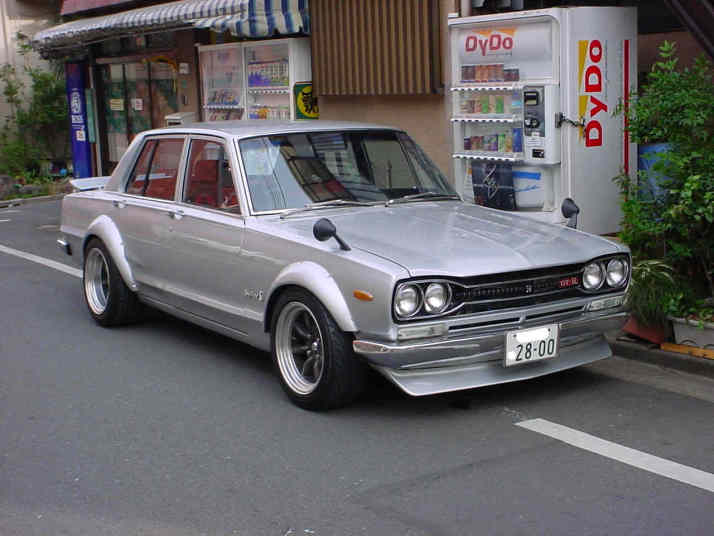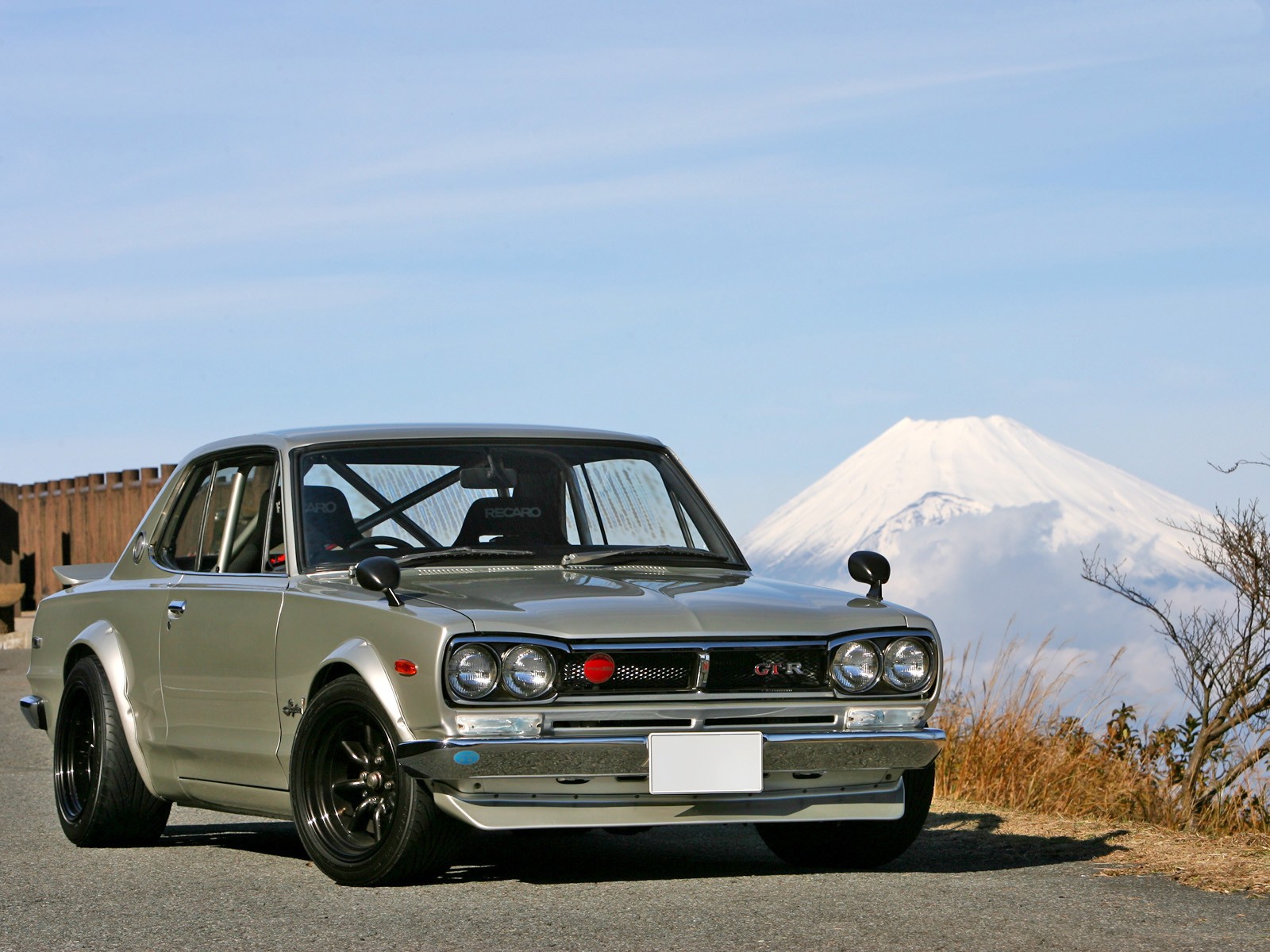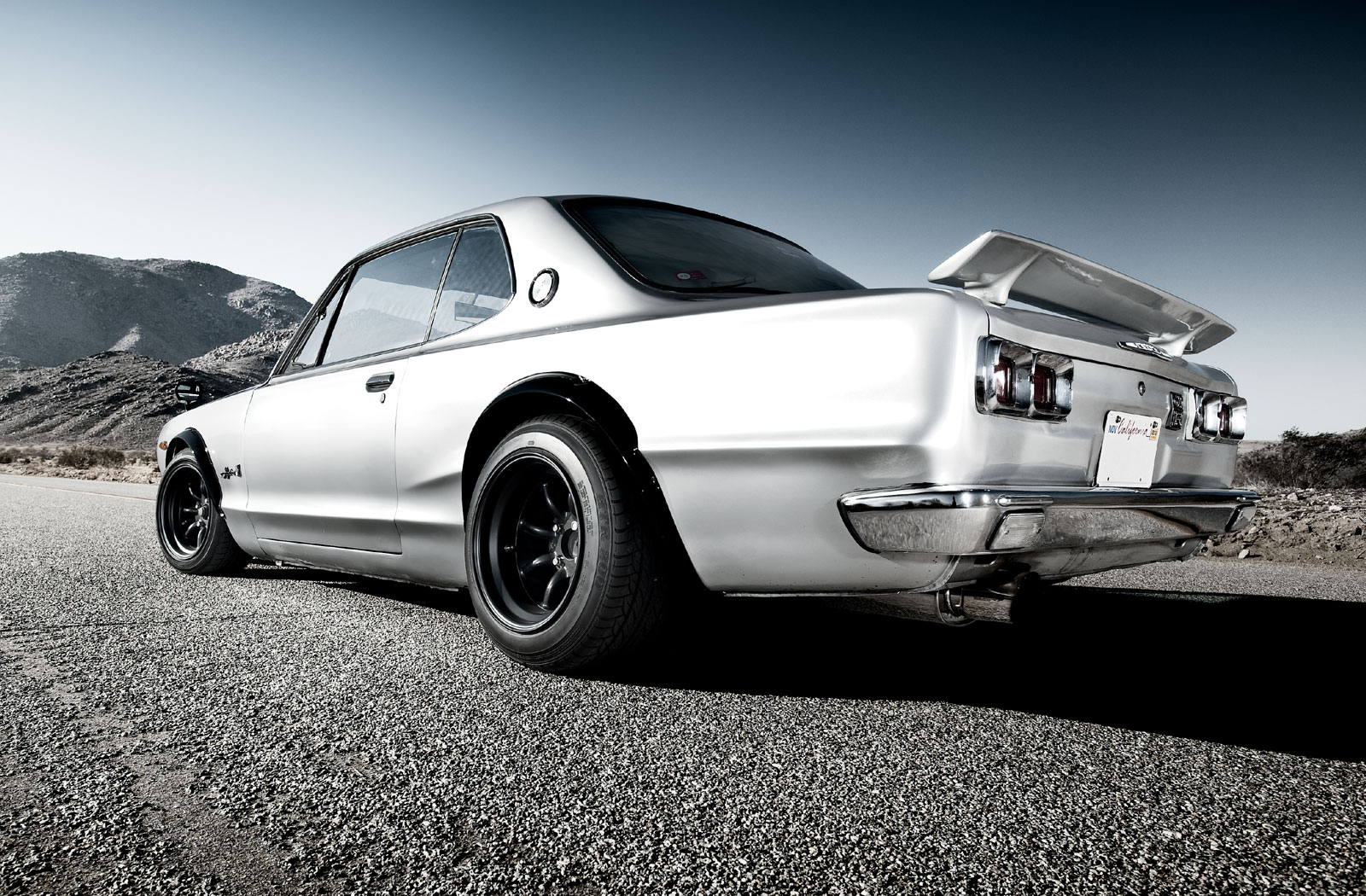The first Nissan Skyline GT-R generation
The PGC10 was released in February 1969 and at first only came in a sedan bodystyle, until two years later, in March 1971 the coupe (KPGC10) followed.

The PGC10 was designed with the perspective of being used in racing and cost double the price of the GC10. For its time it was revolutionary quick and powerful and with its many victories laid the foundation for the "Skyline GT-R legend" as we know it today.

Most important for the race-track success of the PGC Nissan Skyline GT-R was its engine, the S20. The S20 was a 1,989 cc DOHC 24-valve inline-6 with 160 hp, taken from Prince’s race-car R380, and delivered its power to the rear-wheels via a five-speed gearbox. When introduced, the engine used three Weber 40DCOE carburetors, which were replaced by a Lucas Mechanical Fuel Injection System from October 1969 on, boosting power to 230 hp and later to 250 hp.

A strut suspension in front and a semi-trailing arm independent suspension in the rear made the Nissan Skyline 2000 GT-R could also exploit its power on the road.
Exterior changes, on the other hand, were very subtle in comparison to the standard GC10. The GT-R keeps the twin headlights and the square twin-taillights. Overall, there is little hint at the dynamic potential of this car, apart from extended wheel-housings, which were new for 1970 to host wider racing tires. Due to these changes, the KPGC10 Skyline lost the GC10's “surfline”. Concerning the front and rear, the GT-R can only be distinguished from the standard versions by its red GT-R badges, which replace the blue GT badges of the GC10.
On March 7th, 1971, the KPGC10 2-door version of the GT-R made its debut. For this car the wheelbase was shortened from 103.9 in. (2,640 mm) to 101.2 in. (2,570 mm) and the weight was reduced by 45 lbs. (20 kg).
Due to aerodynamic matters, the car got a wider body and optionally a rear-wing, as well as a lower wind screen. Handling over the four-door was further improved by larger tires, which were hosted by expanded wheel-housings on the KPGC10.

Concerning the dynamic side, the four-door version was dominated by strong understeer, which originated from its long wheelbase and low-grip tires. In order to drive quickly, the drivers had to brake hard into the corners to make the tail come out, and then drift the car through them. Of course, this looked very spectacular, which is why the Skyline became so popular with the fans. Now, drifting may look very spectacular, but it is also very exhausting for the drivers, and, more importantly, not very quick.
So Nissan introduced the Nissan Skyline GT-R Coupe (KPGC10), which was supposed to cure all these faults with its wider track and shorter wheelbase. And indeed, this car was even faster than the PGC10 and added several more victories to the GT-R's account. But it was not only an improved version of the PGC10. Even today, the Coupe is considered by famous drivers like Mr. Hasemi (Unisia Jecs Skyline) to be the best balanced Nissan Skyline GT-R ever.

Photo Gallery
[gallery ids="559,568,567,558,560,562,563,564,570,569,565,566"]

No comments:
Post a Comment